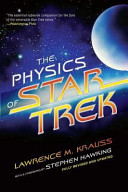The Bell Jar
A famous experiment in high school physics involves putting an electric buzzer in a bell jar, a glass container from which the air can be removed by a pump. When the air is removed, the sound of the buzzer disappears. As early as the seventeenth century, it was recognized that sound needed some medium to travel in. In a vacuum, such as exists inside the bell jar, there is nothing to carry the sound waves, so you don't hear the buzzer inside. To be more specific, sound is a pressure wave, or disturbance, which moves as regions where the pressure is higher or lower than the average pressure propagate through a medium. Take away the medium, and there is no pressure to have a disturbance in. Incidentally, the bell jar example was at the origin of a mystery I discussed earlier, which was very important in the history of physics. For while you cannot hear the buzzer, you can still see it! Hence, if light is supposed to be some sort of wave, what medium does it travel in which isn't removed when you remove the air? This was one of the prime justifications for the postulation of the aether.
Notes:
A jar with a buzzer placed inside it from which the air is pumped out, eliminating the sound.
Folksonomies: communication experiment demonstration
Taxonomies:
/science/physics (0.505485)
/art and entertainment/music (0.472283)
/travel/tourist destinations/europe (0.253298)
Keywords:
bell jar (0.908601 (negative:-0.289781)), buzzer (0.796794 (negative:-0.389462)), bell jar example (0.769949 (negative:-0.328544)), Jar A jar (0.751054 (neutral:0.000000)), high school physics (0.718105 (negative:-0.251018)), electric buzzer (0.709312 (negative:-0.251018)), average pressure propagate (0.687290 (neutral:0.000000)), glass container (0.583925 (neutral:0.000000)), famous experiment (0.583882 (negative:-0.251018)), seventeenth century (0.579250 (neutral:0.000000)), prime justifications (0.567908 (negative:-0.513539)), sound waves (0.551475 (negative:-0.315810)), air (0.551050 (negative:-0.380757)), pressure wave (0.547162 (neutral:0.000000)), disturbance (0.500299 (negative:-0.280740)), medium (0.478420 (negative:-0.310607)), postulation (0.450397 (negative:-0.513539)), aether (0.443925 (negative:-0.513539)), pump (0.436114 (neutral:0.000000)), exists (0.435623 (neutral:0.000000)), sort (0.435353 (negative:-0.384560)), vacuum (0.431329 (negative:-0.321635)), regions (0.431097 (neutral:0.000000)), light (0.429699 (negative:-0.384560)), origin (0.429393 (negative:-0.328544))
Concepts:
Light (0.968692): dbpedia | freebase | opencyc
Sound (0.642688): dbpedia | freebase | opencyc
Fundamental physics concepts (0.635843): dbpedia
Quantum mechanics (0.632870): dbpedia | freebase | opencyc
Transmission medium (0.625558): dbpedia | freebase | yago
Waves (0.607909): dbpedia
Vacuum (0.553566): dbpedia | freebase | opencyc
Optics (0.544382): dbpedia | freebase | opencyc





